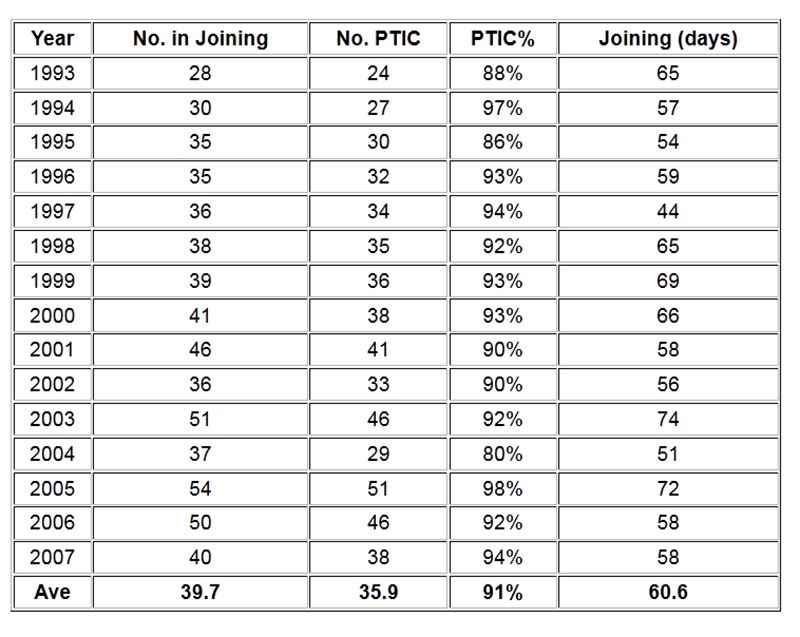YEARLING BULLS A MISSED OPPORTUNITY TO CUT HERD COSTS
By Sarah Jeffrey
Courtesy Farm Journal and Sandy Yeates, Patawalla, Angus stud Rylstone, NSW.
Beef cattle breeders are throwing away thousands of dollars in annual profit by not strategically using yearling bulls in their herd mating programs.
The potential of yearling bulls to add value and longevity to a breeding herd sparks divided opinion within the industry but long time supporters of the concept such as Angus seedstock breeder and former Department of NSW Agriculture beef cattle extension officer Sandy Yeates have the performance data to back the claims.
Yeates is adamant that the use of yearling bulls can fast-track genetic progress within a herd, increase mating loads and working life, reduce injuries, and improve acclimatisation if the bulls are managed correctly. This can deliver valuable dollars into producers’ hip pockets and create unprecedented production efficiencies within individual herds.
He is quick to point out however that the efficiencies in using yearling bulls relate to Bos taurus breeds only, as Bos indicus bulls and their derivatives as well as some European breeds take longer on average to reach sexual maturity. British breed bulls generally reach sexual maturity at 12-14 months provided they are well grown, have a fat score of high 2 or low 3, and have a scrotal circumference of 34 cm or greater.
Yeates’ belief in yearling bulls is backed by 15 years of using them in his own herd. Between 1993 and 2007, yearling bulls from the Yeates’ Patawalla Angus stud near Rylstone, NSW, averaged an impressive 91 percent conception rate over a 60 day joining and a mating load of 40 females per bull, table 1.
Smaller paddocks important
The key to success with yearling bulls, according to Yeates, is utilising smaller paddocks preferably with a single watering point to maximise a bull’s contact with the females and minimise his physical activity.
“Small paddock sizes may have been a concern 10 or 20 years ago but the trend to using higher stock densities coupled with rotational grazing strategies is a perfect environment for yearling bulls,” Yeates said.
“If paddock size is a problem then it may be counteracted by using more females and more bulls to achieve the optimal stock density.”
Conception results like those from Patawalla challenge the general assumption across parts of the beef industry that the bull to cow ratio within commercial herds should be around 3 percent.
“Two percent joinings are definitely not out of the question with yearling bulls – the sort of conception results we have been getting with yearling bulls makes you wonder what the limit is,” Yeates said.
“Experience with serving capacity tests has shown that for every 10 bulls tested, there is at least one and probably two unable to perform a normal service on a female – our bull batteries have far too many free-loaders in them.
“As a result, cattle producers have compensated by joining more bulls than necessary which is wasteful and inefficient.”
To eliminate the costly non-performers, Yeates says producers should have their bulls undergo thorough physical examinations and serving tests each year. While this too involves a cost outlay, it can allow producers to increase cow mating ratios per bull and boost conception rates.
Research shows that under adequate nutritional conditions, fully grown, structurally sound bulls with high serving capacities and scrotal circumferences of 34-36 cm have the ability to get 60 or more females in calf early in the restricted joining season. It suggests that under ideal conditions, correctly managed yearling bulls may be successfully joined to 45-50 females providing they are proven higher servers with large testicles.
In the absence of serving capacity information, it is recommended that producers take a more conservative approach, joining yearling bulls to 25-30 females until an ideal mating load is determined.
“We have found that it is very important to have the mating load correct to avoid injuries that might happen if bulls go through fences or gates.”
In addition to productive potential, bull longevity is one of the keys to maximising the cost/benefit ratio of commercial breeding programs. Data collected over the years by organisations such as the Department of Agriculture suggest that producers are losing out in the longevity stakes.
“In south-eastern Australia, the average working life of a bull is around three years, given that many start as two year olds,” Yeates said.
“This is not a satisfactory result for one of the main operational costs of a beef cattle enterprise. By first using bulls as yearlings, the working life of a bull can be extended by a year or more which represents a 25pc increase. As a result, the purchase price and running costs of bulls can be spread over more calves which in turn reduce bull costs per calf and boost profitability.”
Additionally, Yeates believes bulls first used as yearlings have an increased working life due to superior fitness and lower levels of body fat. This means less stress on their skeletal structure when serving and less likelihood of breakdowns occurring.
Bull access and availability
While the tangible evidence supporting the use of yearling bulls in mating programs is certainly there, the reality of implementation can be quite different. The availability of yearling bulls has been restricted in the past with some seedstock producers reluctant to sell their good young bulls as yearlings, preferring to retain them for later presentation in the sale ring.
This isn’t helped by the nature of stud bull sales in Australia, particularly multi-vendor sales, whereby bulls can be over conditioned in the belief that this will attract greater buyer interest and higher prices. Producers could quite rightly question why, in any environment, should bulls be carrying more than 6-9 mm of fat on the rump?
“Not only does over conditioning hinder reproductive performance, the two biggest causes of breakdowns in bulls are from hip arthritis – over 50pc of all wastage – and broken penis. Over conditioning bulls for sales exacerbates both these conditions,” Yeates said.
“It appears that bulls first used as yearlings are less affected by these serious sources of economic loss.”
According to Yeates, maintaining bulls in anything greater than 2 or 3 score condition is wasteful, counterproductive and inefficient and indicates that the animal is either sexually inactive or under used.
“We are all bought up in the same mould – of course we want an animal that we’ve just paid good money for to look really good, few of us cope well with cognitive dissonance. As an industry though we are still placing far too much emphasis on what we see. We have to forget about what a bull looks like, whether he’s grown out, whether he’s nice and shiny and so forth.
“Why not judge bulls simply on the progeny they produce?”
As a seedstock producer, Yeates understands and acknowledges the difficulty in making the switch to selling bulls as yearlings, particularly when purchased yearling bulls require careful management to maintain calving percentages, body condition and long term breeding potential. Nevertheless he believes management principles required for yearling bulls are, for the most part, common sense.
Management
As they are smaller in size and more subordinate to older bulls, yearlings can be injury prone if joined with older bulls in a mixed mating group. Preferably, yearling bulls should be joined alone or with bulls of the same age to avoid dominance issues.
Potential joining problems could also occur if the size of bulls and females are not compatible – often yearling bulls will not be suitable for joining to large framed cows and should ideally be joined to heifers or young cows.
Being young, the bulls are more likely to be sexually inexperienced and sexually immature and their health and body condition are extremely sensitive to poor nutrition and internal and external parasites. It is imperative that yearling bulls are given adequate nutrition and rest if they are to perform to capacity, according to Yeates.
It is recommended that yearling bulls be joined for 6-8 weeks (two cycles) and then spelled for at least three months.
As a seedstock producer and with this joining recommendation in mind, Yeates aims to market yearling bulls at approximately 500 kgs to ensure they can cope with such a rigorous joining period in their first year.
Once yearling bulls are removed from their joining groups, they should be placed on high-quality feed in specially prepared paddocks to maintain an adequate plain of nutrition and ensure productive potential is maximised.
“Experience has shown that many young bulls have been ruined because they have been joined for too long and under stressful conditions,” Yeates said.
“If at any stage yearling bulls drop below score two condition, they should be immediately withdrawn from their joining group as their sperm production may be jeopardised.
“While yearling bulls do require more careful management, I firmly believe the production benefits can’t be underestimated. Yearling bulls can deliver dividends both in the paddock and to business’ bottom lines and surely as an industry, that’s a path we need to tread.”
Find out more:
Sandy Yeates: syeates@bordernet.com.au
BOX
Yearling bulls deliver branding rate dividends
If there’s one thing that Guy Milson can’t excuse in his commercial beef enterprise, it’s bulls that aren’t at optimum production potential.
The Goulburn based producer firmly believes that using young bulls within a tightly controlled mating program is one of the best ways to boost branding rates and add valuable dollars to a business’ bottom line.
The Milsons operate a mixed prime lamb and beef enterprise running around 480 Angus and Shorthorn females in separate herds and have been joining their younger Angus females to yearling bulls – many sourced from Sandy Yeates’s Patawalla Angus stud near Rylstone, NSW - for around 15 years.
“If you really want to get your numbers up, young bulls are what it is all about. They are fit, agile and will work all day which is exactly what you want as that’s a reflection of libido,” Milson said.
“There’s a multiplier effect in getting it right and conversely, there’s a multiplier effect in getting it wrong.
“If you have a bull in a joining group who isn’t working, particularly if you are multiple joining, not only is he detracting from future productivity, he’s probably going to knock the other bulls in the paddock around as well.
“At the end of the day this just costs your business money.”
Heifers on the Milson’s property Cardross are joined at 12-14 months once they reach 300 kg to yearling bulls at a mating load of one bull to 55 heifers for eight to nine weeks (covering three cycles if seasonal conditions allow).
Conception rates across the herd average an impressive 95pc while maiden heifers average 90pc.
“Management of the yearling bulls is very important, you need to resist the temptation to over use them and they have to be matched to the joining group,” Milson said.
In conjunction with visual appeal and structural correctness, estimated breeding value figures are an important tool in the bull selection process for Milson, particularly growth rate, marbling and birth weight for heifer bulls.
Progeny are sold as weaners or into the feedlot or slaughter markets depending on season, feed availability and market prices. - Sarah Jeffrey
Table 1: How yearling bulls performed in the Patawalla herd over 14 years

